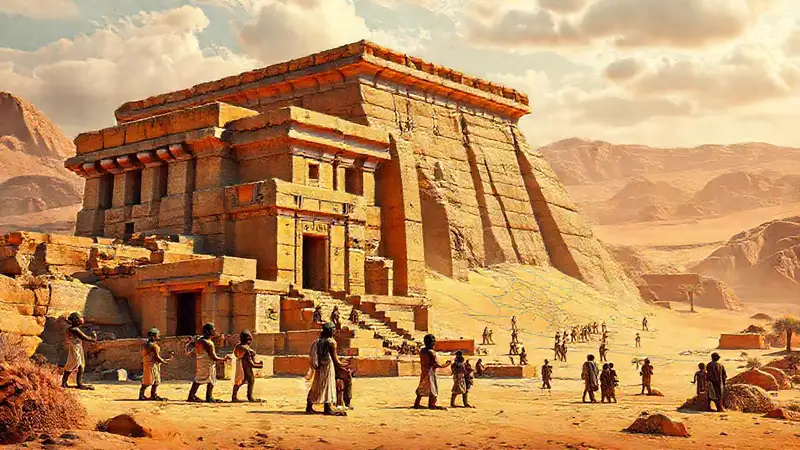Ancient Nubia, located south of Egypt along the Nile River, holds a fascinating and often overlooked history. For centuries, this region was not simply a passive recipient of Egyptian influence, but rather a dynamic player in the wider ancient world, forging complex relationships with its neighbors – both internal and external. Its relationship with Egypt, particularly, is one of the most prolonged and intertwined in ancient history, marked by periods of dominance, subjugation, and ultimately, resurgence and independence. Understanding this relationship is crucial for grasping the broader dynamics of the ancient Near East and the evolution of civilization in Africa. The story of Nubia is one of adaptation, resilience, and a persistent sense of self, carefully crafting its own identity amidst the shadow of a powerful neighbor.
Early Interactions and the Rise of the Kingdom of Kush
The initial contact between Egypt and Nubia dates back to the Predynastic period, with Egyptians establishing trading posts and exerting limited control. However, it wasn't until the 8th century BC that the Kingdom of Kush, centered in Napata, began to assert its independence and engage in increasingly frequent and assertive interactions. Kush initially followed a model somewhat similar to early Egypt, adopting elements of Egyptian culture – architecture, religious practices, and even royal titles – demonstrating a clear desire to emulate the powerful kingdom to the north. This borrowed aspect, however, was always layered with a distinct Nubian identity. Evidence suggests a prolonged period of cultural exchange, exemplified by the discovery of Kushite tombs containing exquisitely crafted Egyptian artifacts, reflecting a reciprocal exchange of goods and ideas.
The Kushite Challenge to Egyptian Dominance
The 8th century BC marked a turning point as Kush, under rulers like Piye and Shabaka, launched a successful military campaign that temporarily overthrew the Egyptian pharaohs and established the 25th Dynasty – the Kushite Dynasty – in Egypt. This was not a simple conquest; rather, it represented a deliberate assertion of Nubian power and a desire to re-shape the political landscape of the region. The Kushites, for a time, rebuilt and expanded Egyptian monuments and temples, signifying their claim to legitimacy and their control over the lands. This period challenged the prevailing narrative of Egyptian exceptionalism and proved that a civilization south of the Nile could rival, and even briefly dominate, the greatest power of its time.
Strategic Alliances and the Decline of the 25th Dynasty

Despite the initial success, the Kushite Dynasty's reign in Egypt was relatively short-lived. Internal divisions, coupled with ongoing resistance from Egyptian loyalists, gradually weakened their grip. Recognizing the limitations of direct rule, the Kushites developed a strategy of strategic alliances, notably with the Assyrian Empire, seeking military and economic support. This proved a double-edged sword. While it provided temporary relief, the reliance on foreign powers contributed to a gradual erosion of Kushite authority and political independence. The shifting geopolitical landscape proved too turbulent for a relatively new dynasty to navigate effectively.
Interactions with Neighboring African Groups: Beyond Egypt
While the focus is often on Egypt, the Kingdom of Kush was deeply intertwined with the wider African political landscape. Kush engaged in extensive trade networks that stretched across the savanna regions of modern-day Sudan and into Central Africa, facilitating the exchange of gold, ivory, slaves, and other valuable commodities. They maintained diplomatic relations, sometimes through military campaigns, with various African kingdoms such as the Kingdom of D’mt (likely located in present-day Eritrea) and the Kingdom of Aksum in Ethiopia. Kush's control of the Nile River and its trade routes made it a crucial intermediary, influencing the political and economic developments of numerous surrounding societies.
Conclusion
The relationship between Kush and Egypt was anything but static. It was a complex and evolving dialogue of competition, imitation, and ultimately, independence. Kush's ability to both learn from and challenge Egypt demonstrates a remarkable capacity for adaptation and a sophisticated understanding of power dynamics. Ultimately, Kush’s journey serves as a critical reminder that the narrative of ancient history should not be solely confined to the established centers of power, but should encompass the vibrant and often overlooked contributions of civilizations on the peripheries.
The legacy of the Kingdom of Kush extends far beyond its brief period of rule in Egypt. Its distinct cultural identity, its contributions to architecture and art, and its crucial role in connecting North and Sub-Saharan Africa solidify its position as a pivotal player in the ancient world, demonstrating a civilization that refused to be simply defined by its powerful northern neighbor, and shaping the course of African history for centuries to come.
 Who were the viziers and what duties did they hold
Who were the viziers and what duties did they hold How did the Indus Valley civilization interact with Mesopotamia
How did the Indus Valley civilization interact with Mesopotamia How did Achaemenid diplomacy shape regional alliances
How did Achaemenid diplomacy shape regional alliances What evidence suggests Kushite involvement in Mediterranean commerce
What evidence suggests Kushite involvement in Mediterranean commerce How did the Hyksos invasion affect Kushite political stability
How did the Hyksos invasion affect Kushite political stability How did Kushite armies mirror or diverge from Egyptian forces
How did Kushite armies mirror or diverge from Egyptian forces How did Kushite metallurgy compare to Egyptian techniques
How did Kushite metallurgy compare to Egyptian techniques
Deja una respuesta